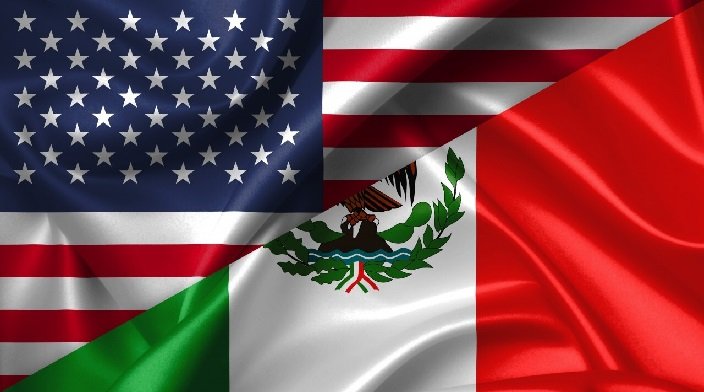
USA vs. Mexico
Few foreign relations contests are as captivating as the US-Mexico one. These neighbors have a complicated relationship, from boundary conflicts to cultural exchanges. Let’s examine the USA-Mexico conflict’s parallels, contrasts, and effects on both nations and the globe USA vs. Mexico.
Introduction: USA vs. Mexico Scene Setting
Understand the history and current relevance of the USA-Mexico relationship before comparing. Both nations have significant history of conquest, colonialism, and nationalism. These regional powerhouses influence geopolitics, commerce, and culture throughout the Americas.
Geopolitics: Border Changes
US-Mexico relations are shaped by their 1,900-mile border. Despite physical barriers, products, people, and ideas move over them, affecting immigration, commerce, and security policy in the USA vs. Mexico.
Key Points:
Millions cross the US-Mexico border yearly for different reasons.
Both nations face illegal immigration, drug trafficking, and people smuggling.
Border security affects diplomatic and internal politics in both countries.
Economic Interdependence
Economically, the US and Mexico have complicated trade, investment, and labor links. Their economic relations have changed from NAFTA to the USMCA.
Key Points:
One of the US’s major trading partners, Mexico trades billions of dollars yearly.
Investment across borders stimulates sectors on both sides, creating jobs and economic progress.
Wage and regulatory disparities affect commerce and outsourcing USA vs. Mexico.
Cultures Interact
The US-Mexico cultural interaction includes language, food, music, and customs. From Hollywood movies to Mexican art, each nation’s cultural contributions improve the world and develop understanding.
Key Points:
Mexican food like tacos, burritos, and guacamole is popular in the US due to Mexican culture.
Spanish language and Hispanic ancestry shape American demography and culture.
Cinco de Mayo and Day of the Dead unite Mexican communities beyond boundaries.
Immigration/Border Security
Politics between the US and Mexico revolve on immigration, border security, unauthorized migration, and asylum seekers. Both countries’ policies affect migrants, their families, and regional stability USA vs. Mexico.
Key Points:
Mexican immigration has shaped California, Texas, and Arizona demography and labor markets.
Building physical barriers to improve border security has caused controversy and legal problems.
Immigration reform and citizenship processes arise from humanitarian and security considerations.
Allies or foes in diplomacy?
Despite periodic conflicts, the US and Mexico have diplomatic relations based on common interests, respect, and geopolitics. Their alliance goes beyond commerce and borders to security and international crime.
Key Points:
Both nations cooperate on drug enforcement, counterterrorism, and environmental protection via bilateral and international agreements.
The Mexican-American War and territorial conflicts still shape attitudes and policy.
Diplomatic efforts promote goodwill and collaboration while resolving conflicts.
Environmental Cooperation
Climate change, pollution, and other environmental issues need international cooperation. The US and Mexico collaborate to protect natural resources and reduce ecological hazards.
Key Points:
Air and water quality along the USA-Mexico border is affected by transboundary pollutants, necessitating environmental activities.
Wildlife corridors and protected areas conserve biodiversity and reduce habitat fragmentation.
Sustainable development and climate resilience in both countries are supported by renewable energy and clean technology collaborations.
Cross-border sports rivalries
Mexico and the US bond via sports, which promotes teamwork and competitiveness. From soccer matches to Olympic rivalry, sports competitions captivate followers across political lines USA vs. Mexico.
Key Points:
Mexico’s most popular sport is soccer, with passionate club and national team rivalry.
USA-Mexico soccer, basketball, and baseball matches excite enthusiastic audiences and boost national pride.
Sports promote cultural understanding and respect via interaction and unity.
Education: Standards Comparison
Education affects labor development, social mobility, and innovation in both countries. While the US and Mexico have different educational issues, improving access, quality, and fairness is crucial situations USA vs. Mexico.
Key Points:
Funding, facilities, and educational achievements differ between US and Mexican schools.
Bilingual education and international academic interactions promote cultural diversity and language competency.
Educational reforms target structural inequalities and improve possibilities for all students, regardless of background or nationality.
Health Systems: Quality and Access
Healthcare is a human right, yet discrepancies in both countries’ systems make it difficult. From universal coverage to private insurance, the US and Mexico struggle with healthcare cost, quality, and equality.
Key Points:
USA healthcare is a combination of public and commercial providers, with policy battles about access, cost, and insurance coverage.
With programs like Seguro Popular, Mexico has expanded healthcare coverage to encompass everyone.
Social variables affect health outcomes and inequities, emphasizing the need for comprehensive public health and wellness programs USA vs. Mexico.
Looking Ahead: Opportunities and Challenges
The USA and Mexico have many chances and challenges in the 21st century that will influence their futures. Key issues for both countries going ahead include economic integration and demographic shifts:USA vs. Mexico.
Key Points:
Trade diversification and innovation may boost global economic development and competitiveness.
Aging populations and urbanization provide employment development and social inclusion possibilities.
Automation and digitalization may boost industry production and efficiency.
To reduce hazards and promote sustainable development, environmental sustainability and climate resilience need proactive efforts.
Social changes like demography and cultural norms need inclusive governance and responsive government.
Looking Ahead USA vs. Mexico
In conclusion, history, geography, and common goals define the USA-Mexico tale. The potential for cooperation and mutual benefit continues, bringing hope for a future of wealth, peace, and partnership despite hurdles.
This thorough study of the US-Mexico connection covers geography, culture, economy, and more. As these bordering countries face common difficulties and grab cooperative opportunities, their links strengthen, benefitting inhabitants on both sides of the border USA vs. Mexico.
As they traverse the 21st century, both countries confront many possibilities and difficulties. From technology advances to demographic shifts, aggressive diplomacy, strategic collaboration, and a shared commitment to mutual prosperity will shape the USA-Mexico relationship USA vs. Mexico.
Key Points:
Renewable energy, digital innovation, and biotechnology enable cooperation and economic progress.
Aging populations and urbanization provide potential for cross-border healthcare, education, and infrastructure cooperation.
Geopolitical issues include regional security threats and global pandemics emphasize US-Mexico strategic alignment and crisis management USA vs. Mexico.
Conclusion: Building Bridges, Crossing Borders
Overall, the USA-Mexico story is one of entwined destiny, shared histories, economy, and cultures. Border conflicts and socioeconomic differences provide problems, but collaboration and cooperation are limitless. Both countries can manage contemporary life and build a better future by embracing conversation, promoting understanding, and advocating shared ideals for USA vs. Mexico.
Frequently asked questions
1. What drives the US-Mexico relationship?
Economic interdependence, cultural exchanges, security concerns, and historical links characterize the US-Mexico relationship. These factors affect diplomatic, commercial, and people-to-people interactions between the countries.
2. How does immigration affect US-Mexico relations?
Immigration issues over border security, illegal migration, and asylum rules shape US-Mexico relations. Immigration reform requires collaboration, compassion, and comprehensive measures that balance security and humanitarian issues.
3. What cultural contacts have the US and Mexico had?
US-Mexico cultural interactions include music, food, language, and customs. These connections promote cultural awareness and appreciation, from Mexican art in American museums to Mexican actors in Hollywood films.
4. How do NAFTA and USMCA affect US-Mexico trade?
Trade between the US and Mexico has changed due to economic accords like NAFTA and the USMCA. These agreements promote the movement of commodities, services, and investments, boosting economic development and job creation while resolving regulatory and labor issues.
5. How will the US-Mexico relationship evolve?
Technological advancements and geopolitical upheavals await the US-Mexico relationship. Both countries can develop a more resilient and productive alliance that benefits their inhabitants and the globe by leveraging their strengths, solving common challenges, and promoting inclusive growth.
The USA-Mexico story involves geopolitics, economics, culture, and diplomacy. By examining these elements and having meaningful conversations, we may better comprehend this complicated connection and strive toward mutual respect, collaboration, and success.






